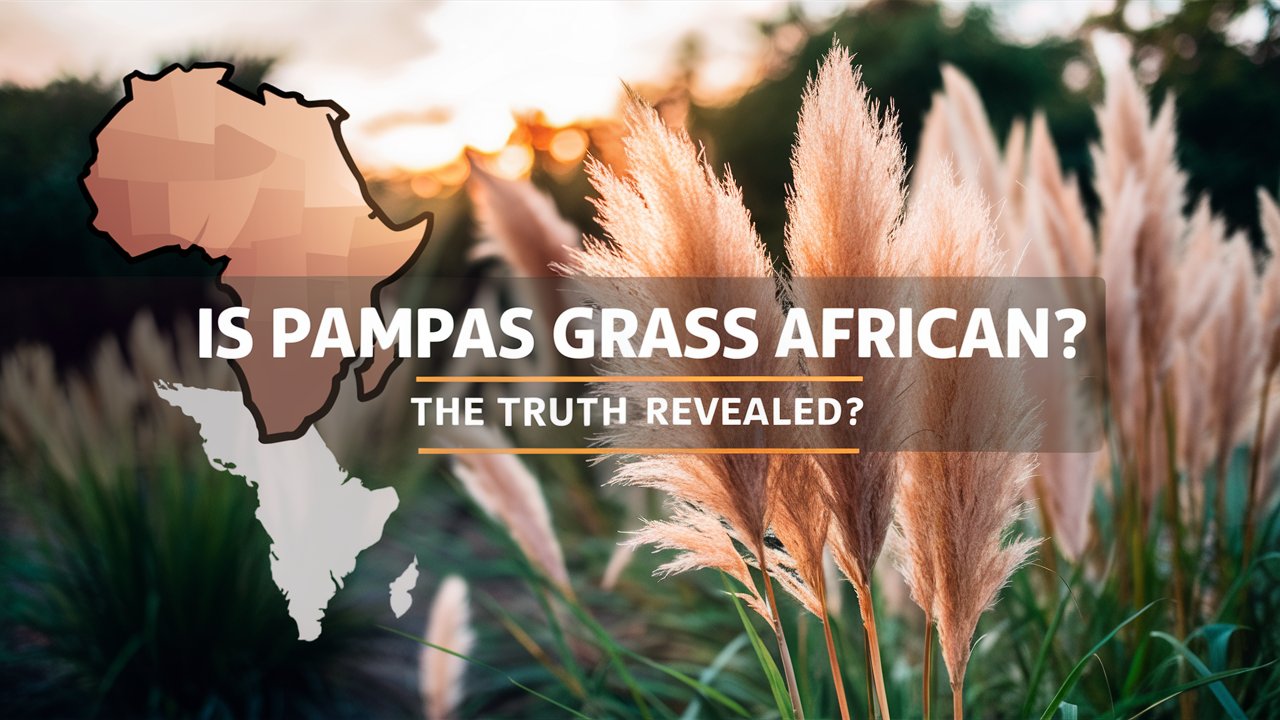Introduction
Is pampas grass African? This question often arises among gardening enthusiasts and those curious about exotic plants. In this blog post, we will delve into the origins, characteristics, and global distribution of pampas grass to uncover the truth about its association with Africa. Let’s explore the fascinating world of pampas grass and answer this intriguing question once and for all.
Origin of Pampas Grass
Pampas grass, scientifically known as Cortaderia selloana, is not African in origin. It is native to South America, specifically the Pampas region, which spans across Argentina, Uruguay, and parts of Brazil. The name “pampas” itself is derived from the Quechua word meaning “plains,” indicating the natural habitat of this grass.
Pampas grass was first described by botanists in the early 19th century and has since become popular in various parts of the world for its ornamental value. Despite its South American roots, it has adapted well to different climates and environments, leading to its widespread cultivation.
Characteristics of Pampas Grass
Pampas grass is a perennial plant known for its tall, feathery plumes and robust growth. Here are some key characteristics:
- Height: It can grow up to 10 feet tall.
- Leaves: The leaves are long, slender, and sharp-edged.
- Flowers: The plumes are fluffy and can be white, pink, or purple, blooming in late summer to early fall.
- Growth: It is a fast-growing grass, capable of thriving in various soil types and conditions.
These characteristics make pampas grass a popular choice for landscaping, as it adds texture and visual interest to gardens and public spaces.
Pampas Grass in Different Regions
Pampas Grass in South America
In its native South America, pampas grass thrives in the temperate climates of the Pampas region. It plays a crucial role in the ecosystem, providing habitat and food for local wildlife. The grasslands of the Pampas are vast and fertile, supporting a diverse range of plant and animal species.
Pampas Grass in Africa
Is pampas grass African? Despite its widespread presence, pampas grass is not native to Africa. However, it has been introduced to various parts of the continent, particularly in South Africa. It was brought to Africa for ornamental purposes and has since naturalized in some regions.
In South Africa, pampas grass can be found in gardens, parks, and along roadsides. Its ability to adapt to different climates has allowed it to establish itself in various habitats outside its native range. However, in some areas, it is considered invasive due to its aggressive growth and tendency to outcompete local vegetation.
Uses of Pampas Grass
Pampas grass has a variety of uses, both practical and ornamental:
- Landscaping: Its striking plumes and tall stature make it a popular choice for garden decoration.
- Erosion Control: Its extensive root system helps stabilize soil and prevent erosion.
- Crafts and Floral Arrangements: The dried plumes are often used in floral arrangements and craft projects.
- Habitat: It provides shelter for wildlife and can be used to create natural barriers.
Despite its benefits, it is essential to manage pampas grass carefully to prevent it from becoming invasive.
Environmental Impact of Pampas Grass
While pampas grass is valued for its ornamental and practical uses, it can have negative environmental impacts when introduced outside its native range. In some regions, it has become invasive, outcompeting local plant species and disrupting ecosystems. Effective management strategies are crucial to control its spread and minimize its impact on native flora and fauna.
Conclusion
Is pampas grass African? The answer is no. Pampas grass originates from South America, specifically the Pampas region. However, its adaptability has led to its presence in various parts of the world, including Africa. Understanding its origin and characteristics can help in managing its growth and preventing it from becoming invasive.
FAQs
Is pampas grass invasive?
Yes, in some regions, pampas grass is considered invasive due to its rapid growth and ability to outcompete native vegetation.
Can pampas grass grow in Africa?
Yes, pampas grass can grow in Africa, particularly in South Africa, where it has been introduced for ornamental purposes.
What are the uses of pampas grass?
Pampas grass is used for landscaping, erosion control, crafts, and providing habitat for wildlife.
How tall can pampas grass grow?
Pampas grass can grow up to 10 feet tall, making it a striking feature in gardens and landscapes.
Is pampas grass native to Africa?
No, pampas grass is not native to Africa. It originates from the Pampas region in South America.


